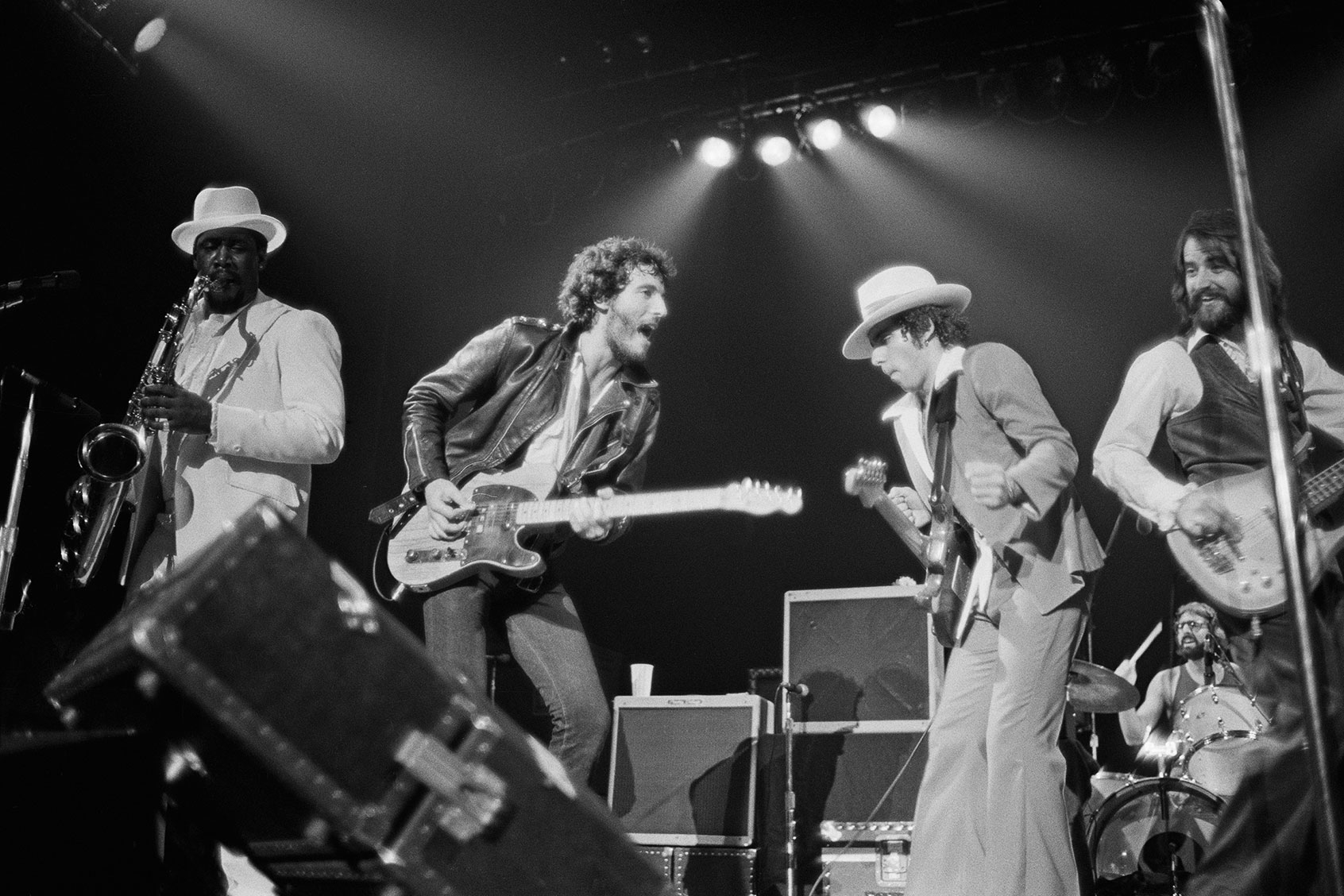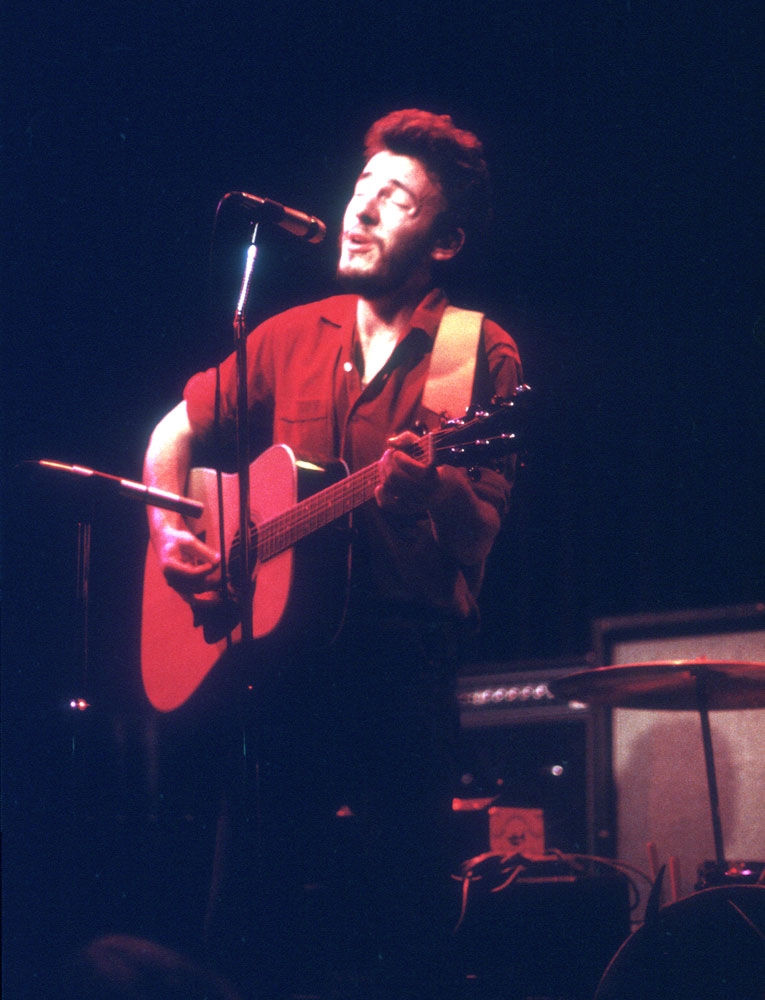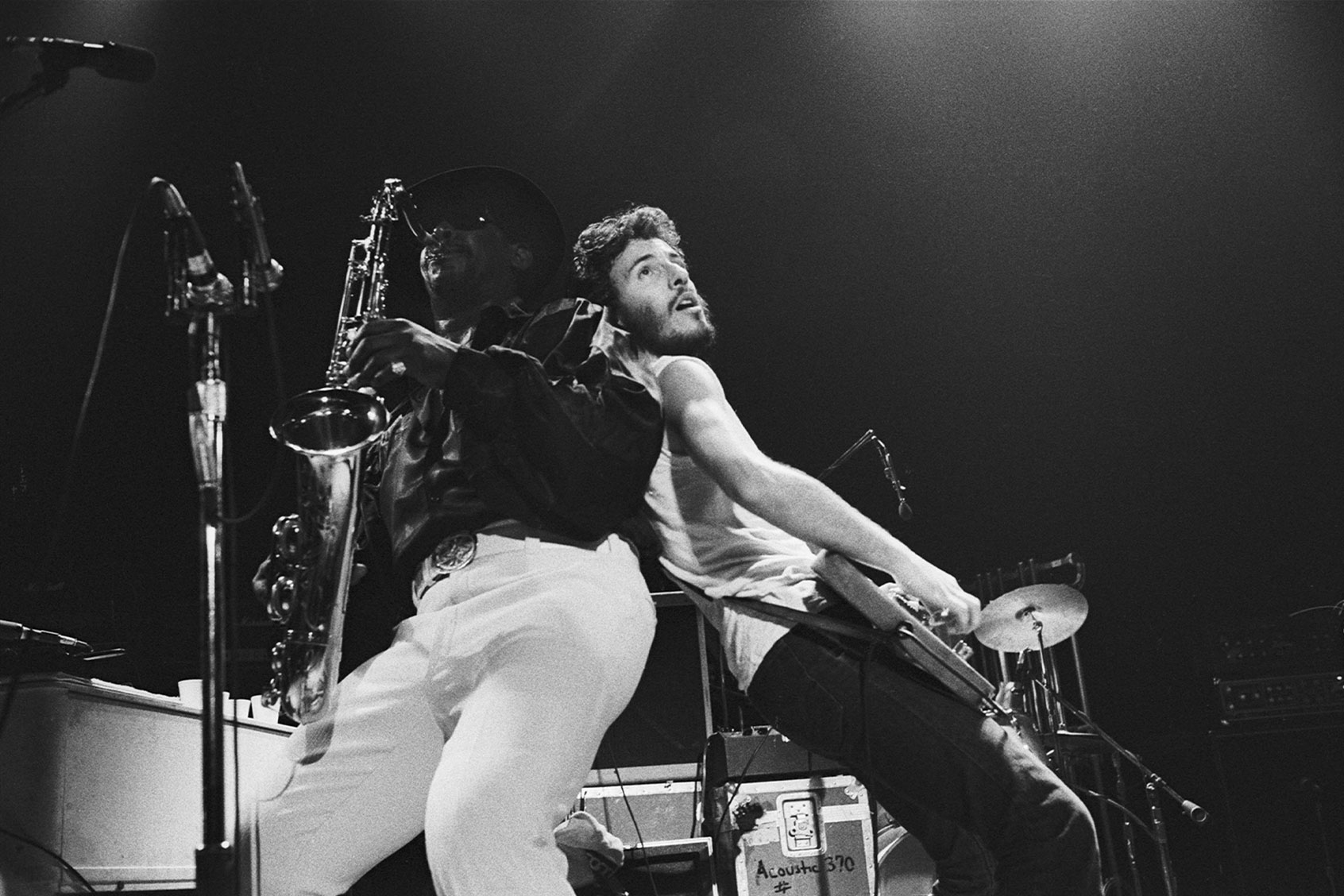It was my friend, Pete who first introduced me to Bruce Springsteen. It was the summer of 1985, a year after the album “Born in the USA” had catapulted The Boss into the rock ‘n’ roll mainstream.
As a disciple of British new wave music, I’d yet to become a Springsteen fan. Growing up in England in the early 1980s, I had been too young to be swept away by the power of “Born to Run,” while MTV-era Bruce sounded too curated and conventional to my punk-attuned ears.
“It was a musical epiphany. … It was like nothing else I’d ever heard.”
All that changed the day Pete sauntered into my house, Benson and Hedges cigarette clenched between his teeth, and a C90 cassette in his pocket containing home-taped copies of “Greetings from Asbury Park, NJ” and “The Wild, the Innocent and the E Street Shuffle.”
“Springsteen. First two albums. Way, way better than his current stuff,” he announced, or words to that effect, lobbing the cassette nonchalantly on to my bed.
Pete and I were in a band, a desperately ambitious three-piece that tried too hard to sound like Echo and the Bunnymen. Musically, he was something of a mentor. It was through him that I had discovered the avant-garde delights of the Velvet Underground and Talking Heads. I took his recommendations seriously.
I can’t recall the full details of our conversation that day, but I do remember that at some point, I carefully extracted the cassette from its plastic box and inserted it into my cheap tape deck.
It was a musical epiphany. Beautiful sounds pulsated through the speakers and danced around my teenage bedroom: the teasing guitar riff at the beginning of “Blinded by the Light” followed by the song’s dense, verbose lyrics.
“Madman bummers, drummers and Indians in the summer with a teenage diplomat.”
It was like nothing else I’d ever heard. By the end of the third number, I was hooked – not on the stadium-filling, fist-punching Springsteen that everyone else revered, but on the lesser-known, more rebellious younger version.
“They marked Bruce at his apex, a jumble of loose, jazzy riffs and poetic lyrics colored with intricate rhymes.”
Bruce Springsteen didn’t suddenly explode on the music scene. He arrived inauspiciously in 1973 with two albums released 10 months apart. While garnering positive critical attention, they logged relatively disappointing sales. Major glory only came with “Born to Run” in 1975 after he’d nearly been dropped by his record company. Global domination had to wait until the release of “Born in the USA” nearly a decade later.
Based on their poor sales, one might assume that Springsteen’s first two albums were undistinguished and forgettable. But, for myself and Pete, they marked Bruce at his apex, a jumble of loose, jazzy riffs and poetic lyrics colored with intricate rhymes. It was the kind of refreshing, rough-around-the-edges sound that directly appealed to callow British teenagers like us. While some critics dismissed the records as grandiloquent and sketchily produced, we embraced their quirky storytelling and spontaneous energy. They might have lacked the broad mainstream appeal and professionalism of “Born in the USA,” but there was a freshness and uniqueness about them that Springsteen would struggle to recreate in his later work.
 Bruce Springsteen and the E-Street Band perform live on stage at the Carlton Theatre in Red Bank, New Jersey, USA during the Born To Run tour on 11th October 1975. (Fin Costello/Redferns/Getty Images)
Bruce Springsteen and the E-Street Band perform live on stage at the Carlton Theatre in Red Bank, New Jersey, USA during the Born To Run tour on 11th October 1975. (Fin Costello/Redferns/Getty Images)
As it turned out, I wasn’t the only Gen-Xer plundering The Boss’ back catalogue for inspiration. His first album, “Greetings from Asbury Park, NJ,” released in January 1973, finally busted its way into the UK album charts in 1985, spearheaded by retro music-loving kids who had belatedly discovered that there was more to Springsteen than Cadillacs and American flags.
It was in marked contrast to the album’s original release. Back then, Columbia Records had promoted the 23-year-old Springsteen as the next Bob Dylan, a kiss-of-death moniker that rang hollow when the LP flopped. Tuning in 12 years later, it was hard to fathom exactly why. To me, everything about his dynamic debut album, from its picture postcard cover to its enigmatic song titles, seemed novel and intriguing.
As an aspiring keyboard player, I was particularly drawn to the piano playing of David Sancious, a crucial lynchpin in Bruce’s nascent backing band. Punk rock hadn’t been kind to keyboardists, and I was relieved to finally discover a musician whose complex riffs and jazzy chords were cool, challenging and fun to play. Sancious’ piano was especially crucial in “It’s Hard to be a Saint in the City,” the song that had apparently persuaded legendary producer, Joe Hammond to sign Bruce to Columbia Records in the first place.
The Boss’ sophomore album, “The Wild, the Innocent and the E Street Shuffle,” released in November 1973, went one better. Earlier that year, Springsteen had been exposed to the jubilant horns of Van Morrison, and his infatuation with the Irishman’s Celtic soul music clearly shows. Eschewing the folksier sound of “Greetings from Asbury Park, NJ,” his backing group, now clearly recognizable as the E Street Band, were eloquently getting into their stride: Vini “Mad Dog” Lopez on drums, Garry Tallent on bass, Sancious on piano, Danny Federici on organ and accordion, and the “Big Man” Clarence Clemons on saxophone.
The record’s highlights are mostly on side two where three extended songs combine in what can best be compared to a rock ‘n’ roll version of Gershwin’s “Rhapsody in Blue.”
“Incident on 57th Street” is a gritty West Side Story-style tale that acted as a romantic precursor to “Born to Run.” It segues effortlessly into “Rosalita (Come Out Tonight)” an epic seven-minute-long song that offers a breathless roller-coaster ride through the hurdles of forbidden love and would immediately become a live performance staple. “New York City Serenade” is one of the most underrated songs in the Springsteen canon, a seamless fusion of rock, jazz and classical elements that distills the city through music in the same way as Woody Allen’s “Manhattan” would later do through film.
Years later, when I visited New York City, I walked its streets to the soundtrack of Springsteen’s first two albums playing on my Walkman.
While 1973’s record-buying public might not have been quite ready for Springsteen’s precocious song-writing skills, the critics were more charitable. “Bruce Springsteen is a bold new talent with more than a mouthful to say,” chimed the often-scathing reviewer, Lester Bangs while discussing “Greetings from Asbury Park, NJ.” In Rolling Stone Magazine, Ken Emerson claimed the “Uproarious first album sounded like [Bob Dylan’s] ‘Subterranean Homesick Blues’ played at 78 rpm” with Springsteen “rhyming and wailing for the sheer fun of it.”
The ultimate compliment came when Manfred Mann’s Earth Band radically reworked the album’s most iconic song, “Blinded by the Light,” taking it to No. 1 in the U.S. singles chart in 1976. They went on to release two more cover versions from the album (“For You” and “Spirit in the Night”) to varying degrees of success.
 Bruce Springsteen (Michael Ochs Archives/Getty Images)
Bruce Springsteen (Michael Ochs Archives/Getty Images)
“The two earliest LPs had … become mere whispers in the musical grapevine. By embracing them, it felt as if you were joining a secret cult.”
Springsteen’s star ascended steeply after 1973 propelled by a litany of great songs and a pulsating live act. “I saw rock and roll future, and its name is Bruce Springsteen,” wrote the musician’s soon-to-be manager Jon Landau after witnessing him play in Cambridge, Massachusetts in 1974. Landau subsequently helped Springsteen through the trials and tribulations of “Born to Run” and its difficult recording process. On its release, the record became an overnight sensation complemented by a raft of legendary live shows and, in October 1975, Springsteen appeared on the covers of both Newsweek and Time. The Boss’ second coming was certainly more auspicious than his first.
By the time I discovered Springsteen in the mid-1980s, he was at his commercial peak packing out stadiums and grappling with the runaway success of “Born in the USA” which went on to become one of the best-selling albums of all time. Occluded by his global fame, the two earliest LPs had, by that point, become mere whispers in the musical grapevine. By embracing them, it felt as if you were joining a secret cult.
But it was a cult that grew. Both albums have garnered a groundswell of admirers in more recent times. Rolling Stone Magazine ranked “Rosalita (Come Out Tonight)” and “Incident on 57th Street” at No. 11 and 17 respectively in a 2010 rundown of Bruce’s 100 best songs, and “The Wild. The Innocent and the E Street Shuffle” came in at No. 4 in an all-time Rolling Stone reader’s poll in 2012 (two places above “Born in the USA”). Looking back, they were important harbingers for the glories to come.
Want a daily wrap-up of all the news and commentary Salon has to offer? Subscribe to our morning newsletter, Crash Course.
As much as I love the grandeur and ambition of “Thunder Road” and the creative artistry of some of Springsteen’s later songs (“Candy’s Room,” “Point Blank,” and “Atlantic City” to name but three), his first two pioneering albums remain my favorites. To my mind, they mark Bruce at his most playful and uncensored, full of big dreams and New York fantasies, unwary of critics and unwilling to fit into a rigid box. Nearly 50 years after their original release, I return to them regularly, the cassette player replaced by a Sonos audio system, but the volume still revved up full as the horns glissando, the guitar kicks in, and that immortal voice starts jabbering effusively about Rosalita, Spanish Johnny, and all those other well-drawn characters from his New Jersey youth.
Read more
about Bruce Springsteen

